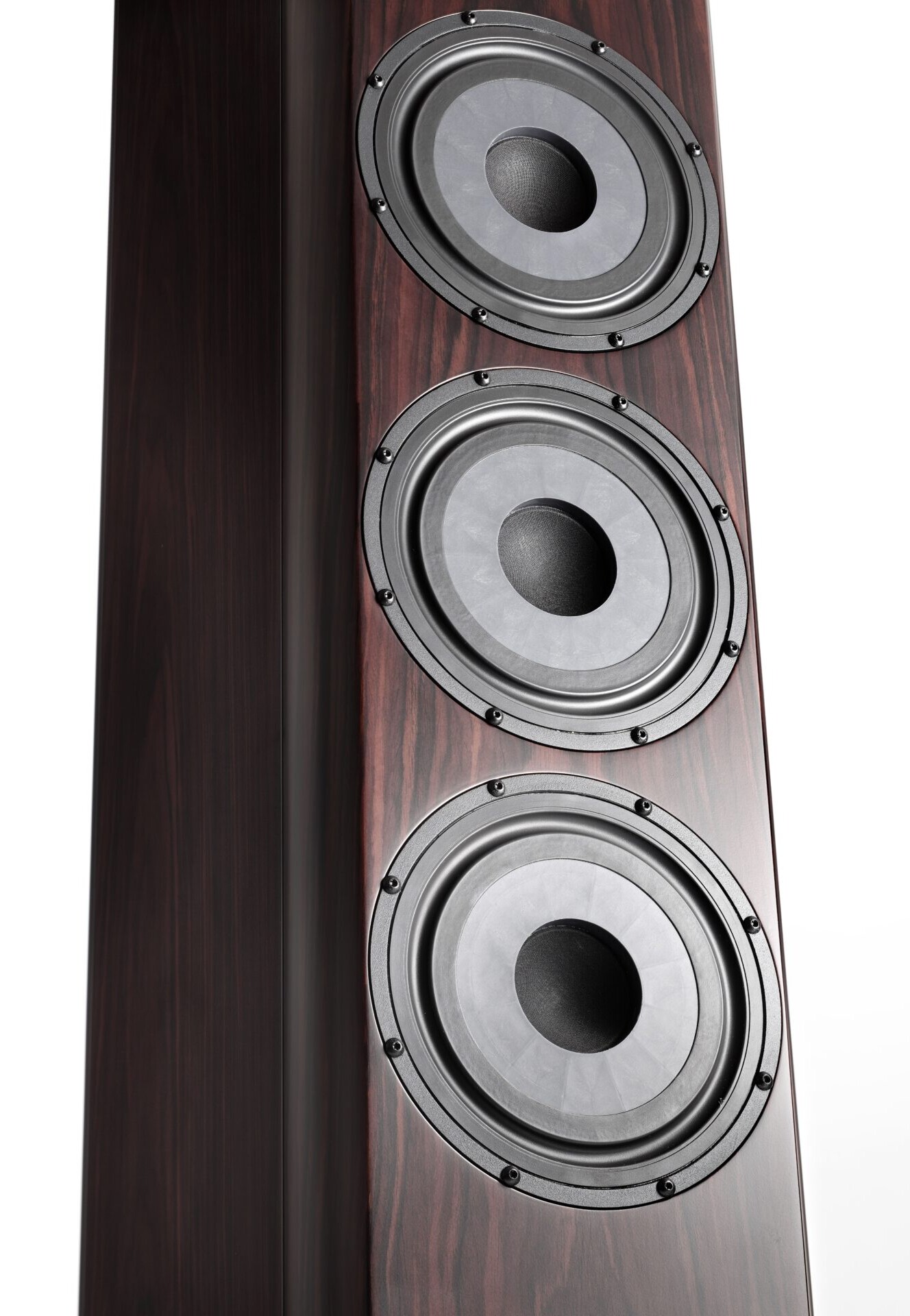
Step up in scale to the Elgar Introduction and Allegro (from the excellent John Wilson/Sinfonia of London recordings of English string music, this on Chandos CHSA 5291) and you hear the same drive and purpose, rich colours and musical substance, writ large. The dramatic opening passages are predictably impressive and energetic, but the quieter sections emphasis the speakers’ coherent portrayal of space and depth, their easy grasp of the longitudinal/temporal domain and their ability to build in level and musical density. This has quickly become a favourite recording of this often difficult piece, a work that so often either burns too bright or falls flat. Wilson scales the orchestra’s effort perfectly and the Liszts keep that effort moving firmly forward. If you think that a natural tonal balance and proper instrumental warmth go hand in hand with a sluggish, rounded and dynamically constipated sound (as, in fairness, they all too often do) the Liszt Reference will have you revising that opinion. Tonally and dynamically, in this case you really can have your cake and eat it.
As revealed by the close comparisons to the BSG (and other speakers), what makes the Liszt IIs so musically engaging and rewarding is not just their ability to invest instruments and performers with natural body, colour and presence, but the way they let the performance breathe, the way they encapsulate the individuality in the event. Víkingur Ólafsson’s recording of Bach’s Goldberg Variations (DGG 483 7701) may lack the transparency, body, immediacy and the complex, layered instrumental dimensionality of his Debussy/Rameau disc, but played on the Liszt Reference the piano has a crisp presence and solidity, the performance an uncanny grace and agility. It might not have the absolute clarity of attack and note weight that make the earlier disc so convincing, but the pacing and phrasing has an effortless continuity and shape which cuts right to the heart of the musical evolution, capturing both what is being played and the instrument it’s being played on. It’s an object lesson in sonic character welded to musical insight. The ability to capture an instrument’s character is about more than tonal and harmonic accuracy. It’s about the energy envelope and its continuity across the musical range. Ólafsson’s Goldbergs certainly make that point, with the utter coherence of their sound and dynamic coherence across the keyboard, but if you want to really appreciate just how naturally the VA speakers express the inner workings of the piece, it’s another version you need.
Space/Time continuum…
In 2006, Julian Rachlin, Nobuko Imai and Mischa Maisky recorded a Goldberg Variations transcription for string trio (DGG 477 6378). It’s a fascinating performance that casts the familiar music in a whole new light, the interplay between the instruments illuminating it as if from within, playing with the right/left hand relationship. While the piano version rests firmly on the right hand, a role you might expect to pass directly to the violin while the cello takes the part of the left, the presence of the viola throws a real curve ball, splitting its affections between its partner instruments, adding depth and shifting the musical focus accordingly. The Viennas keep the three instruments effortlessly separate, both in space and tonality. In the case of the centrally placed cello that is easy enough, but the woodier, richer tones of the viola are equally unmistakable and distinct, both in terms of their location and, crucially, their contribution to the overall musical balance and evolution. Given that a piece normally played by two hands on a single instrument is being split across three, the relationship between the performers is key – as is the system’s ability to capture it. On the most basic level, the intra-instrumental understanding has to be spot on if the piece is to retain its overall sense of shape and structure. But at the same time, if the distinction and the separation between each instrument’s contribution isn’t clear, the exercise becomes entirely academic. In musical terms, the piece has to hold together but you want the viola to act as the ‘third hand’, literally adding another musical dimension. In this recording the playing and the understanding between the players is exquisite, while listening on the Liszt, the speakers preserve the layers and relationships within the performance with a musical ease and clarity that reveals that whole new aspect to the work that fuelled the project.

